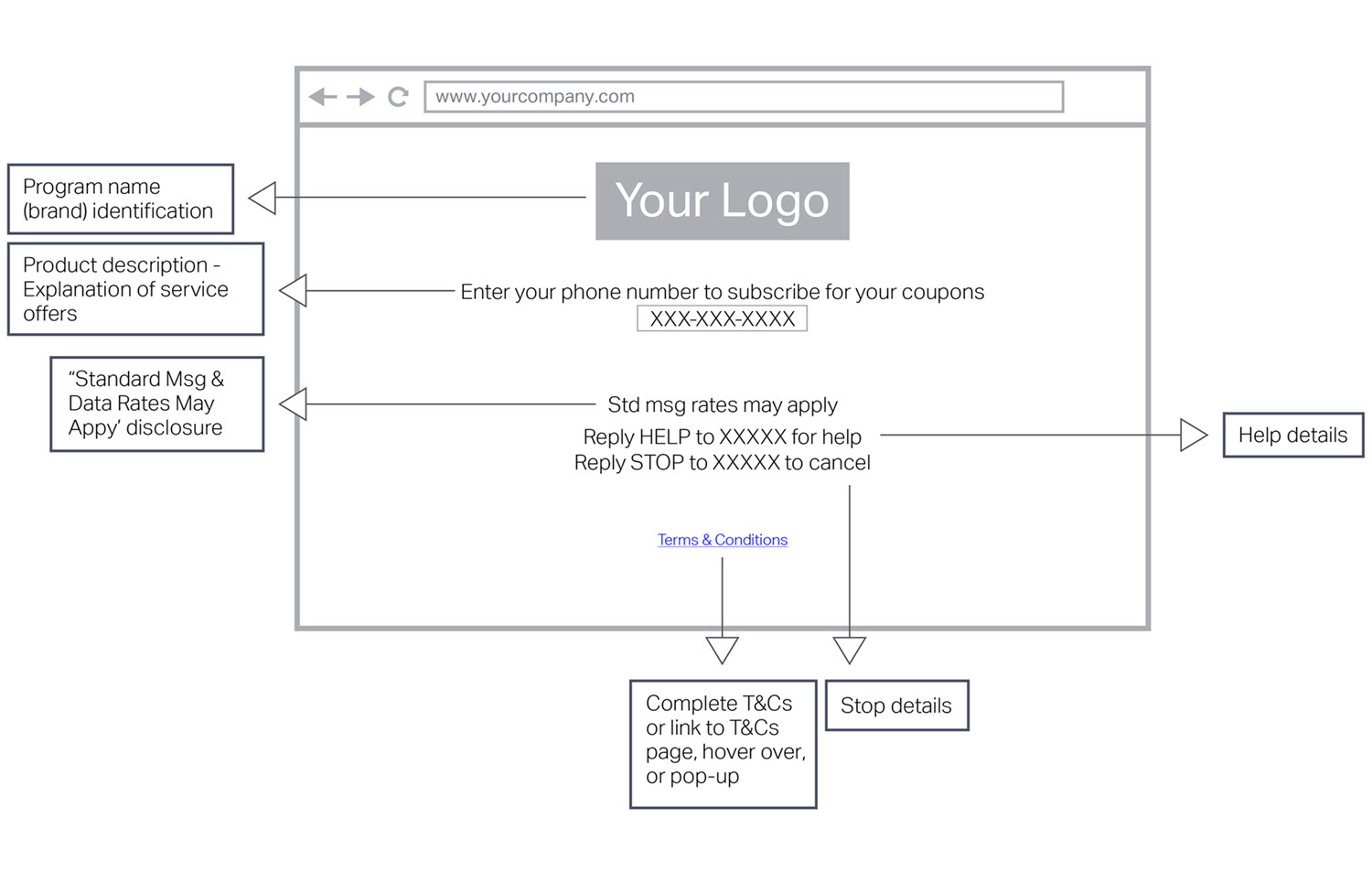North America messaging content requirements
Last updated: 3/15/2023These guidelines are relevant for SMS and MMS compliance in USA and Canada.
Any business running an SMS or MMS messaging program in USA or Canada must comply with certain industry guidelines and mobile operator policies. However, it can be challenging to stay compliant with guidelines and policies that are continually evolving. This page provides graphical descriptions of the most commonly used types of messages, such as opt-in, help, stop, and error messages.
Specifically, the graphical descriptions here show the wording you must use in mobile messages and on web pages for SMS or MMS messaging programs. The information here reflects current CTIA and carrier compliance requirements.
For more details about messaging requirements, refer to the CTIA Short Code Monitoring Handbook (opens in a new tab) and the CTIA Messaging Principles and Best Practices (opens in a new tab).
US requirements
This section explains the content that's required in text messages and on web pages for US end users. The information here reflects current CTIA and carrier compliance requirements.
Additional information
- Short code programs should promote customer care contact instructions and opt-out instructions at program opt-in and at regular intervals in content or services messages. This content must be provided at least once per month.
- Shared short codes are no longer permitted by US mobile network operators.
- "Reply STOP to cancel" is no longer required in all content outbound messages.
Content for SMS and MMS message flows
Opt-in for a recurring message
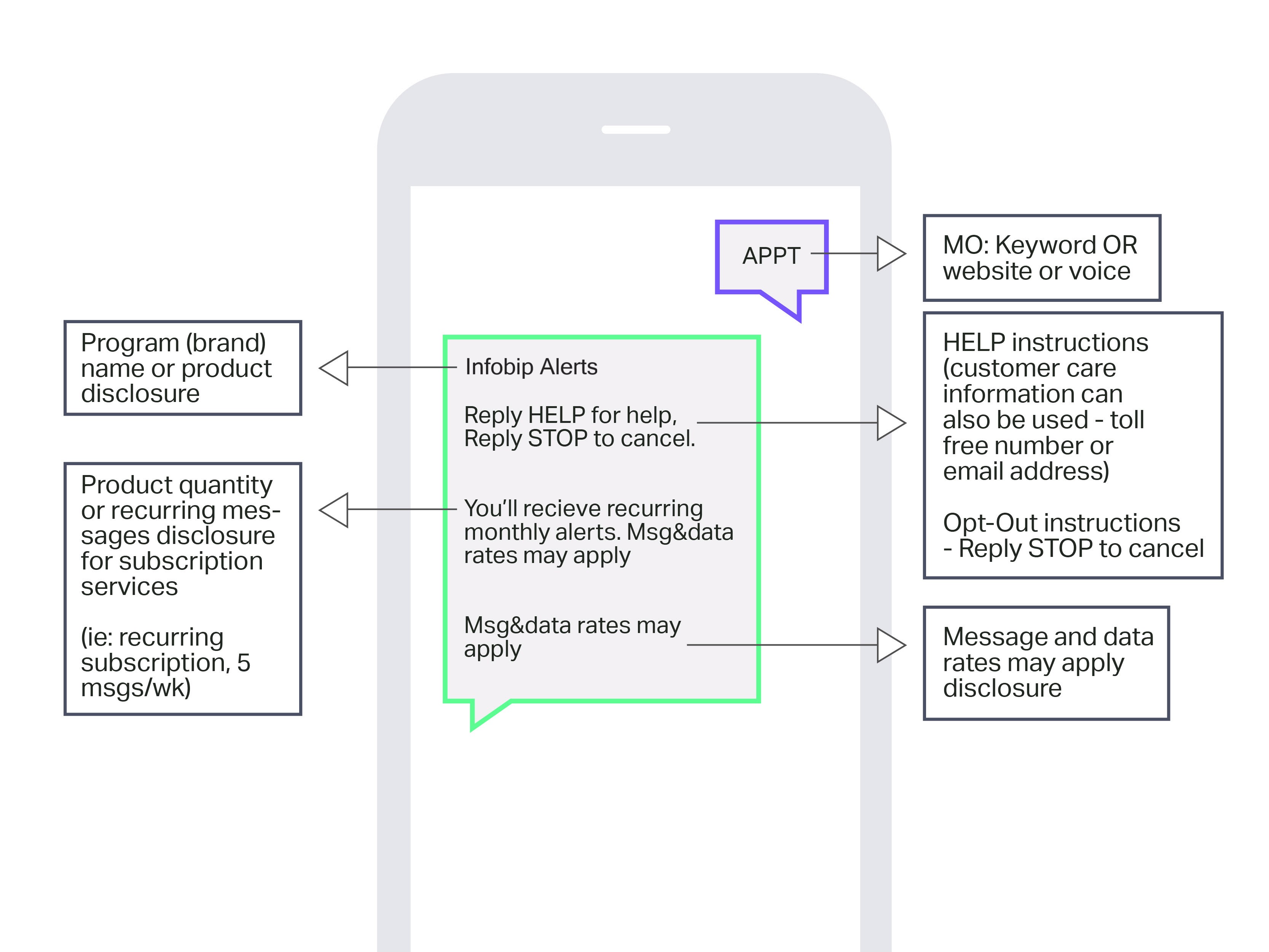
Web opt-in for a single-item message
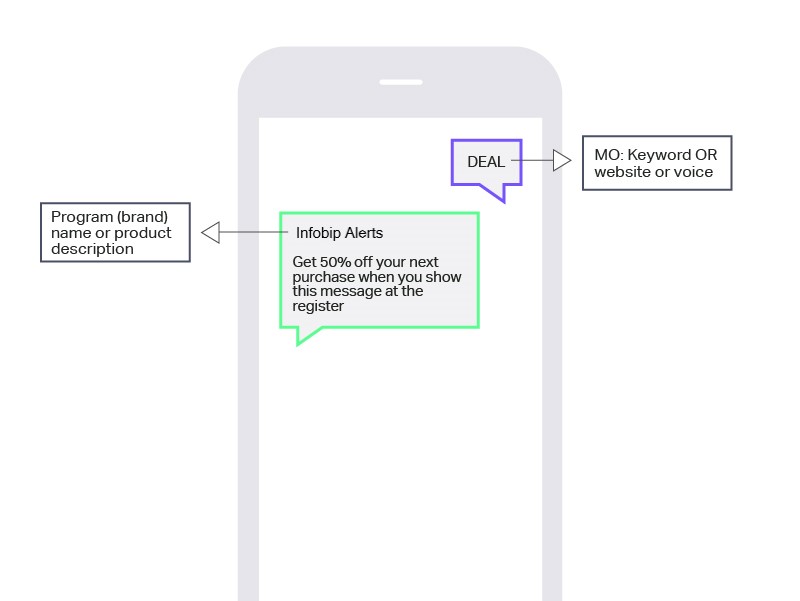
HELP messages for all message flows

STOP messages for all message flows
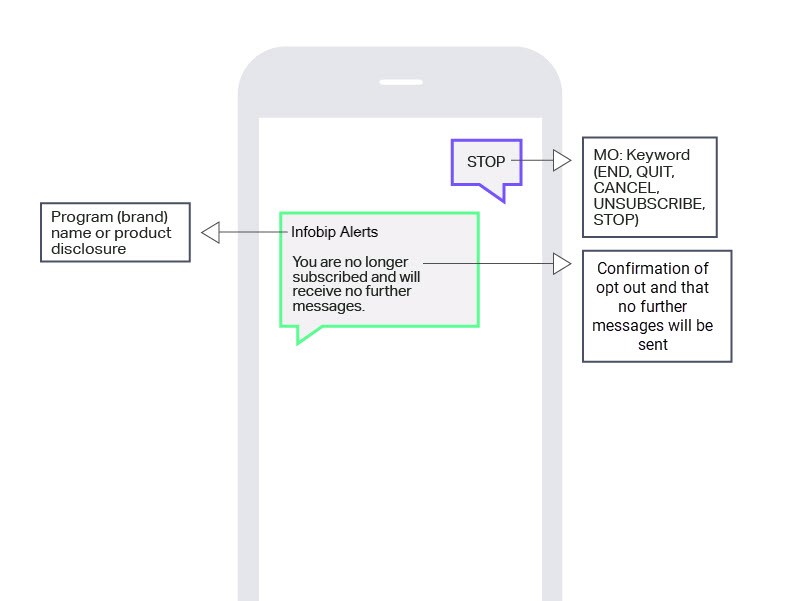
Content for website pages
Call-to-action for recurring message with keyword opt-in
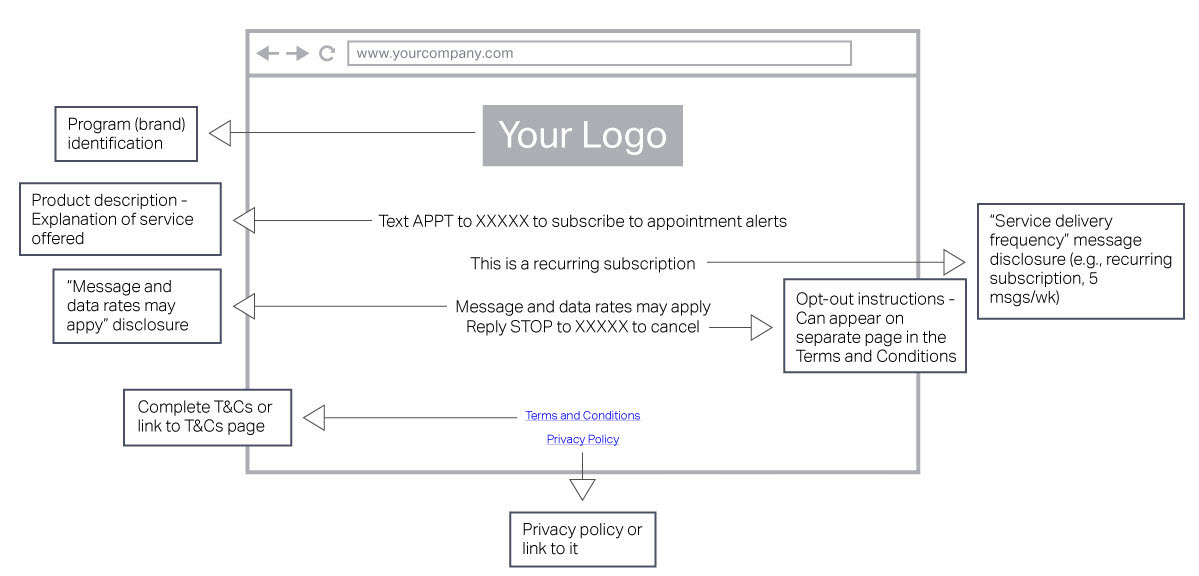
Call-to-action for recurring message with web opt-in
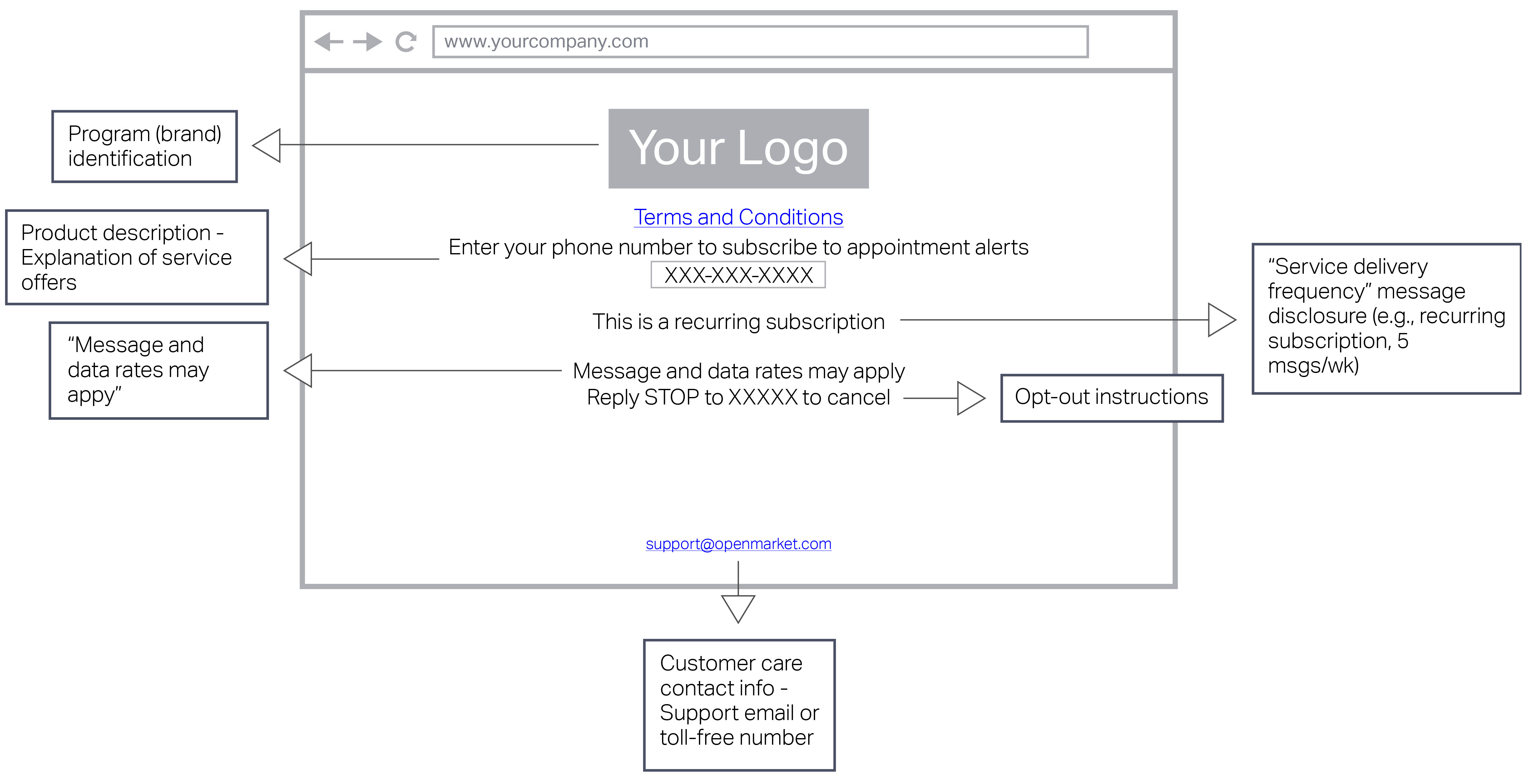
Terms & conditions web page for a recurring message

Call-to-action for single-item message with keyword opt-in
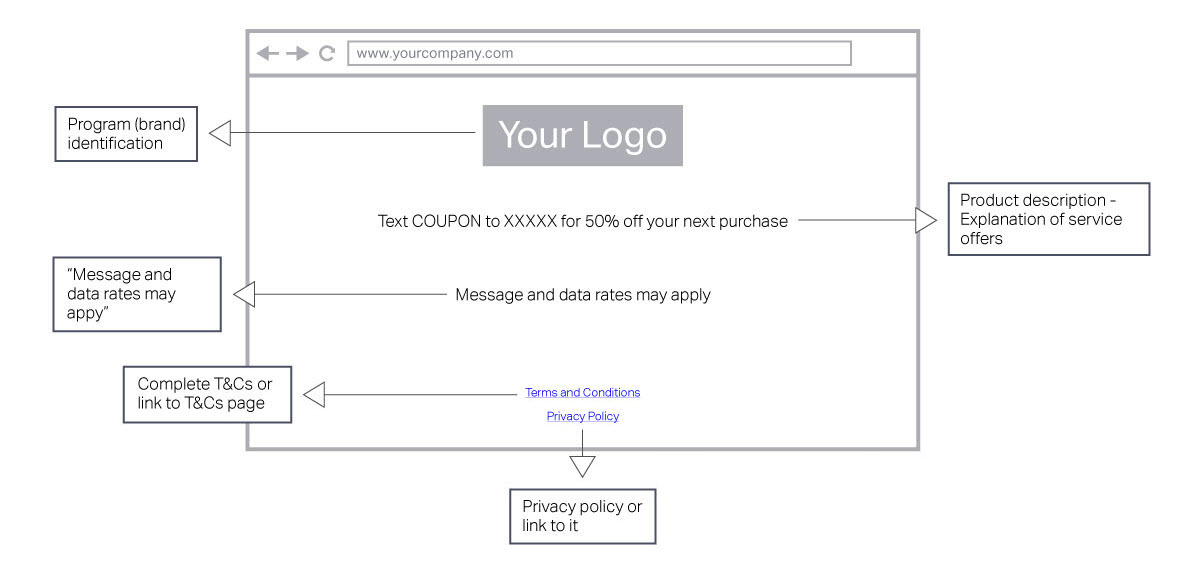
Call-to-action for single-item message with web opt-in
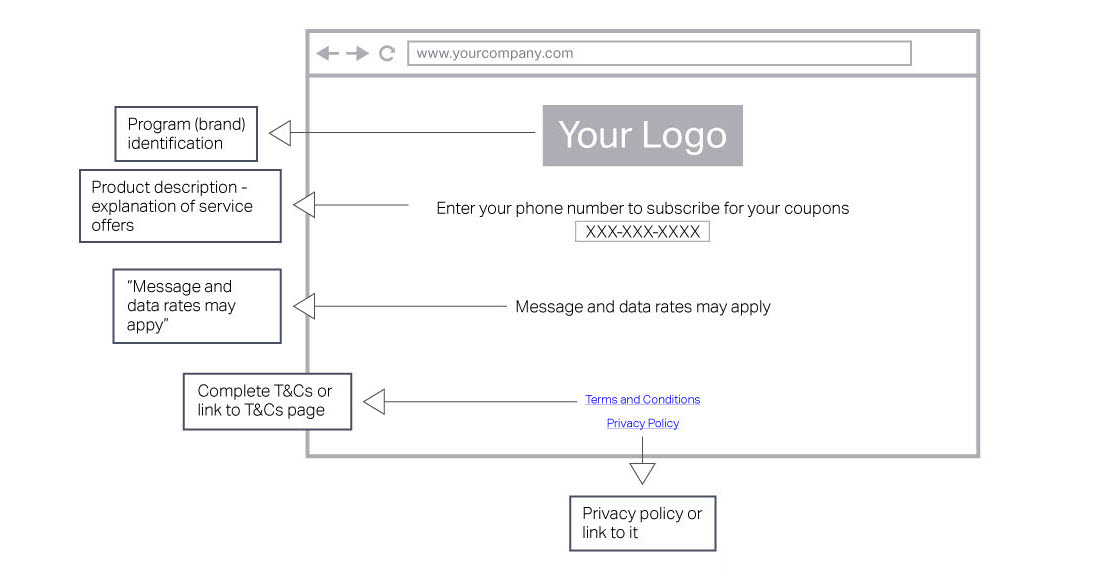
Terms & conditions web page for a single-item message

Canada requirements
This section explains the content that's required in text messages and on web pages for Canadian end users. The information here reflects current CWTA Application Guidelines (opens in a new tab) and Carrier Acceptance Test Plan requirements.
General guidelines
- Character limit: 160
- Required keywords: STOP, INFO, AIDE, ARRET, and HELP
- French language support: If French is supported, responses to the keywords AIDE and ARRET must be in French.
- Translation requirement: All outbound messages must be translated into French.
- Disclosure: Standard message and data rates may apply.
- URL link condition: If there is no URL link in a message, the term "data" does not need to be included.
- Acceptable verbiage: Use "Standard message rates may apply" unless there are clickable URLs, in which case it must state "Standard message and data rates may apply."
- Mobile operator listing: If the supporting URL lists mobile operators for any country, all supported Canadian operators must be listed.
- Terms and conditions: If the service supports a separate terms and conditions link, HELP and STOP details must be included within the terms and conditions.
- Emergency/Urgent services: Approved on a case-by-case basis and must include a timestamp.
Content for opt-in and subscription reminder messages
SMS and web opt-in for a single-item message

SMS opt-in for a recurring message
The requirements noted here apply to both traditional and nontraditional recurring messages. For nontraditional messages such as flight notifications and appointment reminders, the end user might receive more than one outbound message, even though the service does not recur monthly.
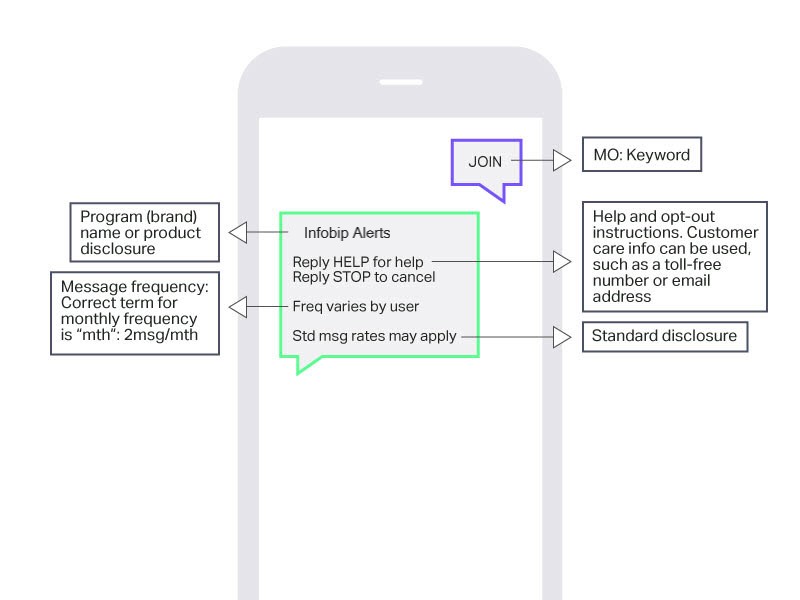
Web opt-in for a recurring message
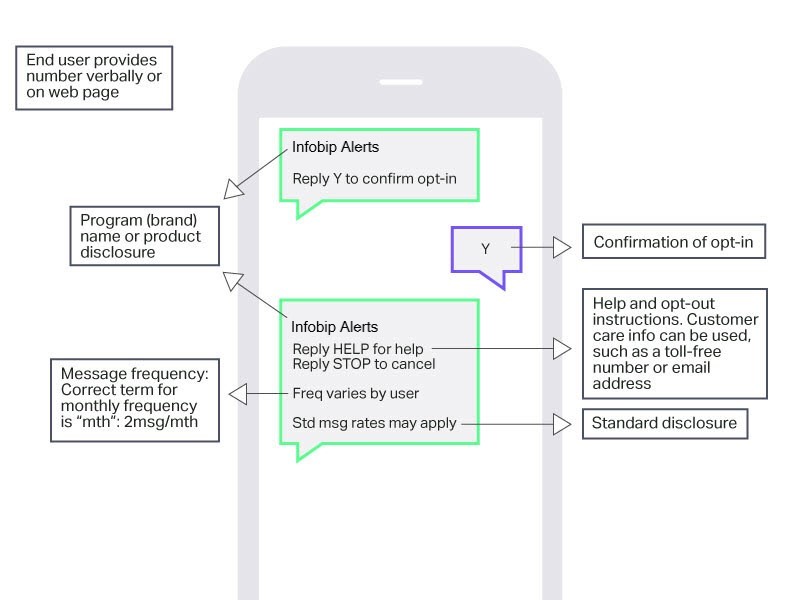
Monthly subscription reminder for a recurring message
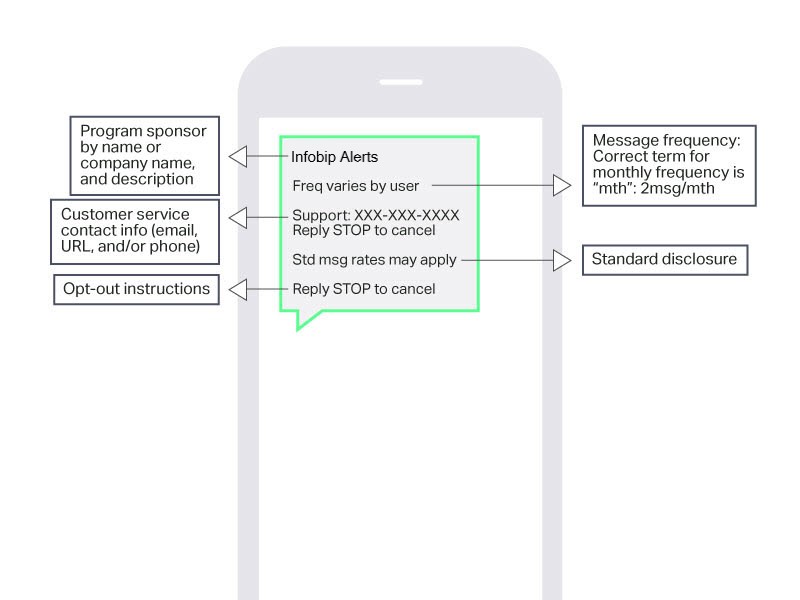
Content for HELP, STOP, and ERROR messages for all flows
In any SMS messaging program, you must use certain keywords to enable end users to get help, stop messages from being sent, or opt out of a program.
- HELP, AIDE, or INFO
- STOP or ARRET
These keywords must appear in all capital letters so that they're highly visible to the end user, and in Canada they must be available in both English and French unless the program is promoted solely in one language. In that case it's acceptable to use the keywords in only that one language.
HELP/AIDE/INFO message
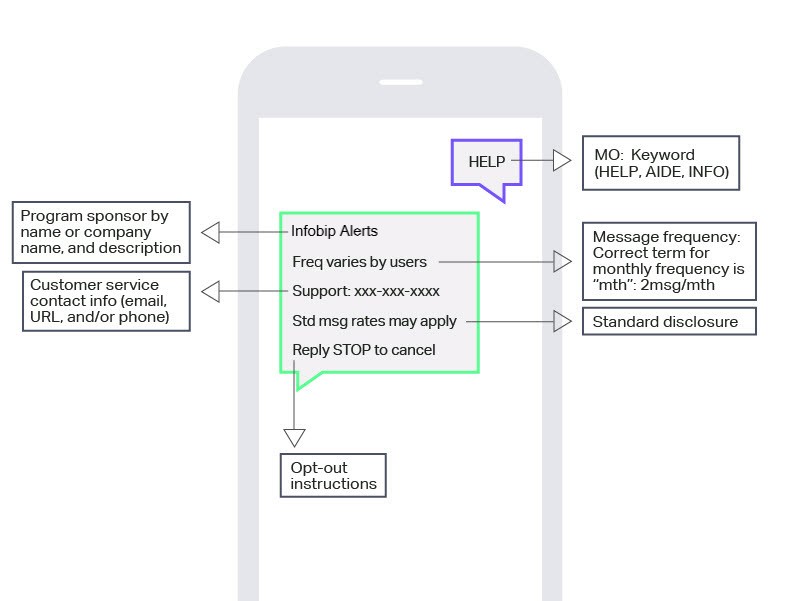
STOP message
For non-subscription programs, the STOP/ARRET message is required to include that the "service is not a subscription".
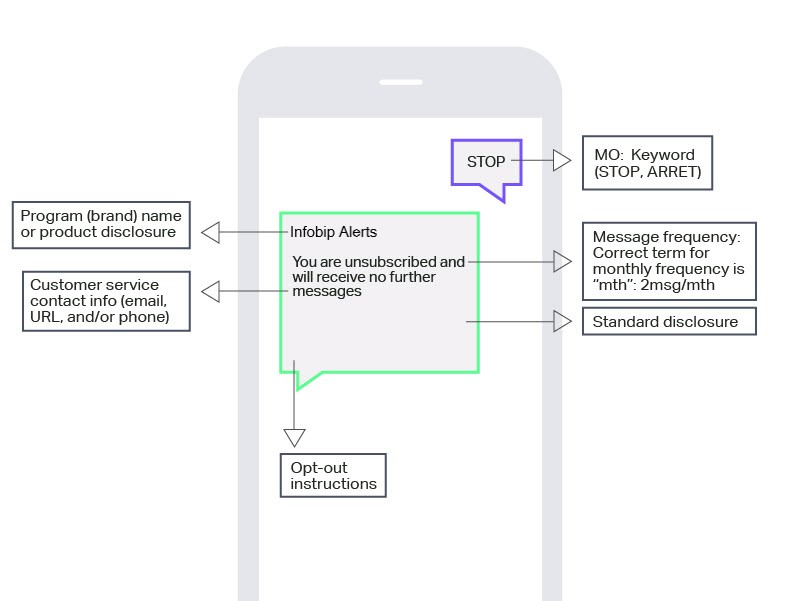
Error message

Content for web pages
When you want end users to opt in to a program from a web page, your content must include a clear call to action, and you must enable the end user to initiate opt-in from the web page.
Call-to-action for single-item message with keyword opt-in
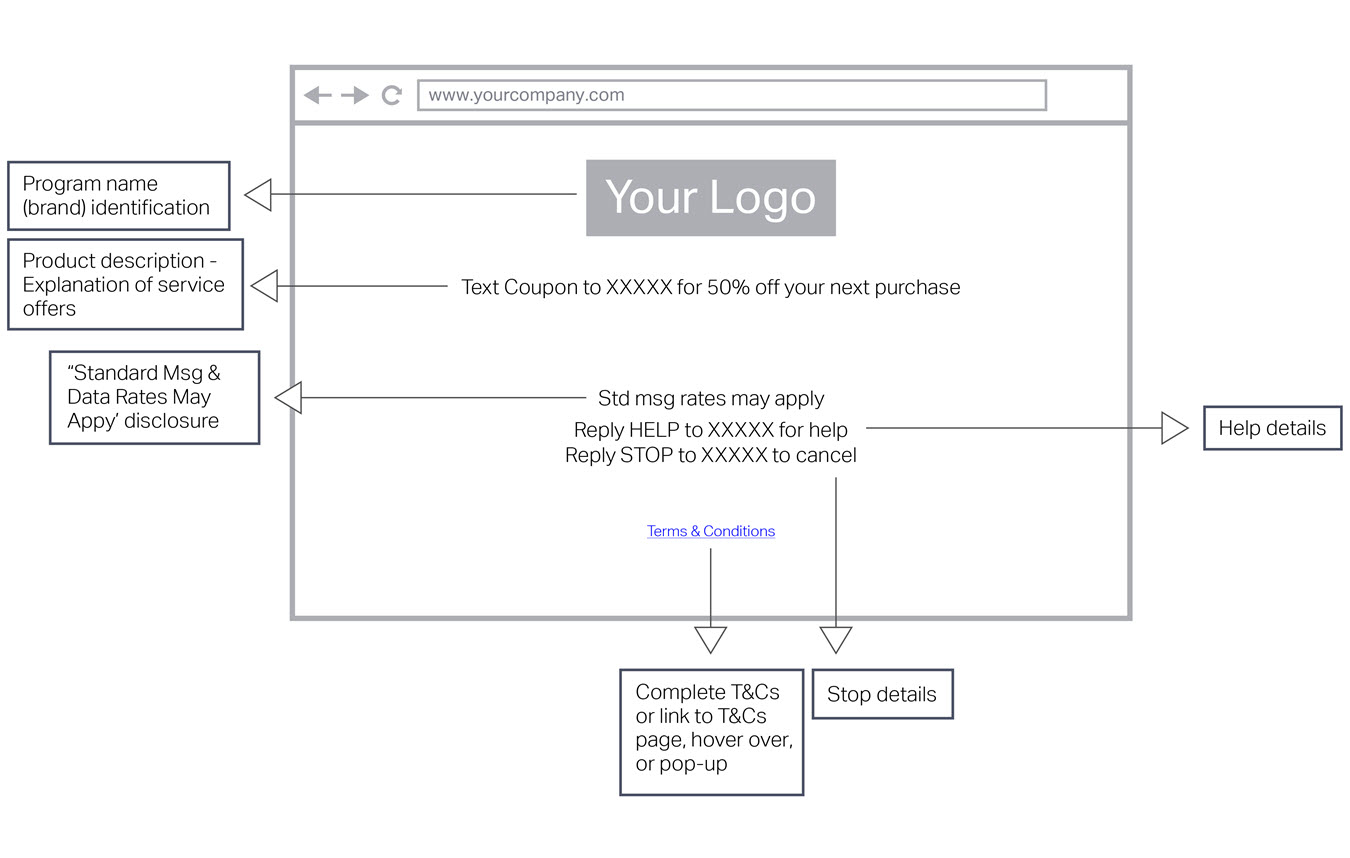
Call-to-action for single-item message with web opt-in
